If you’ve ever seen a picture of a Quokka, you’ve probably noticed its infectious smile. This small marsupial, often referred to as the “world’s happiest animal,” is native to Australia and has a charm that has captured the hearts of many. Let’s take a deep dive into the life of this cute creature to learn more about why it’s so special!
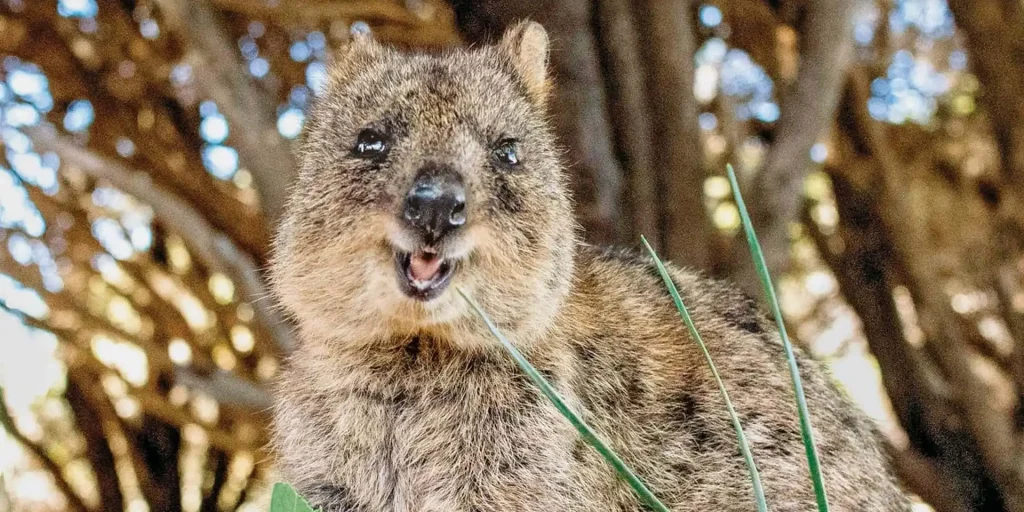
What is a Quokka?
A Quokka (scientific name: Setonix brachyurus) is a small wallaby, and it’s one of the tiniest members of the kangaroo family. It has a round face with small, rounded ears and a short, stocky body covered in brownish-grey fur. Measuring about 40 to 54 cm (15 to 21 inches) in length and weighing 2.5 to 5 kg, the Quokka is roughly the size of a domestic cat. Its tail, unlike its cousin kangaroos, is much shorter at about 25 to 31 cm.
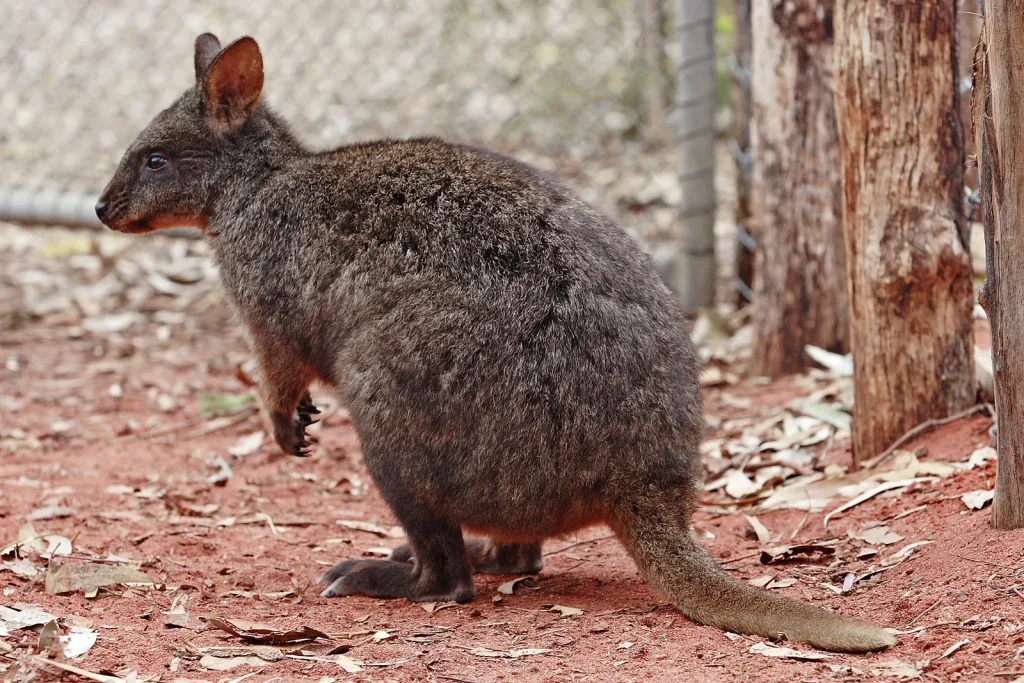
Despite their size, these animals are skilled climbers and can even scale small trees if they need to. Their large back legs allow them to hop around, much like kangaroos and wallabies, making them agile and quick
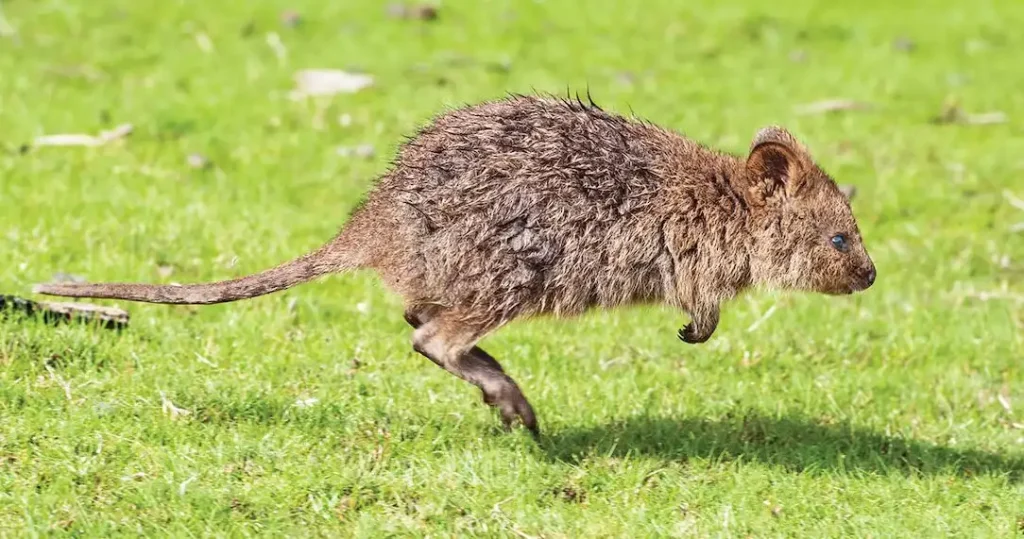
Where Do Quokkas Live?
Quokkas are native to a small part of southwestern Australia, but they are most famously found on Rottnest Island, located just off the coast of Perth. This island, known for its beautiful beaches and lack of predators, is home to the largest Quokka population. Some Quokkas also inhabit Bald Island, near Albany, and small pockets of the mainland

The animals prefer habitats with dense vegetation, where they can find plenty of shade during the hot Australian days. They are nocturnal, so they come out at night to forage for food, returning to their safe, cool homes in the morning

The Famous Quokka Smile
One of the things that makes Quokkas stand out is their seemingly permanent smile. Thanks to the shape of their mouths, they always appear to be grinning, which has led to their reputation as the happiest animals on Earth. Their friendly and approachable demeanour also makes them very popular with tourists who visit Rottnest Island. However, it’s important to note that even though Quokkas may seem friendly, it’s illegal to touch or feed them
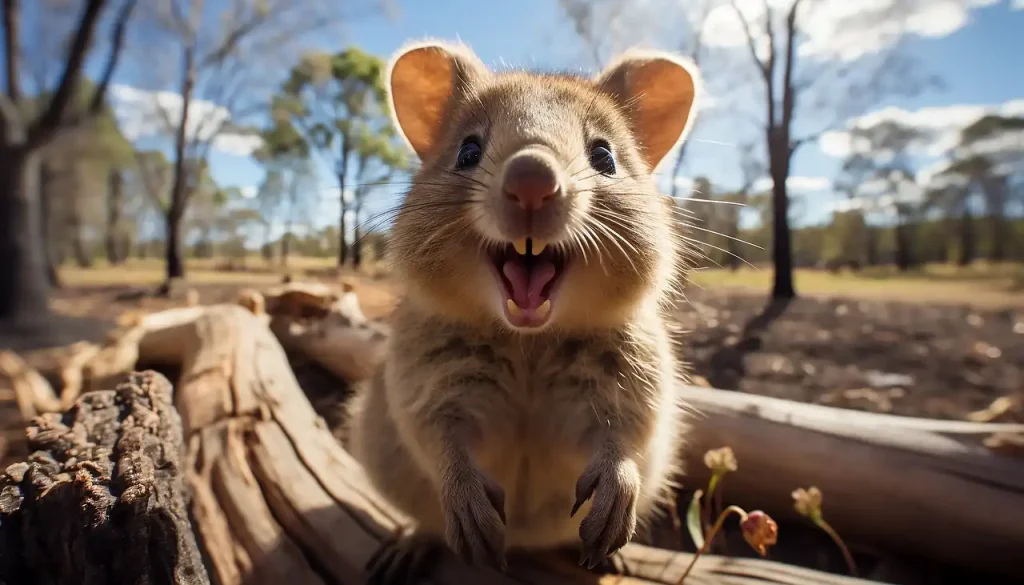
What Do Quokkas Eat?
Quokkas are herbivores, which means they only eat plants. They prefer to nibble on grasses, leaves, and succulents. Their diet changes depending on the season and the availability of fresh plant growth. On Rottnest Island, their favourite foods are succulents, as these plants help them stay hydrated in the hot, dry environment
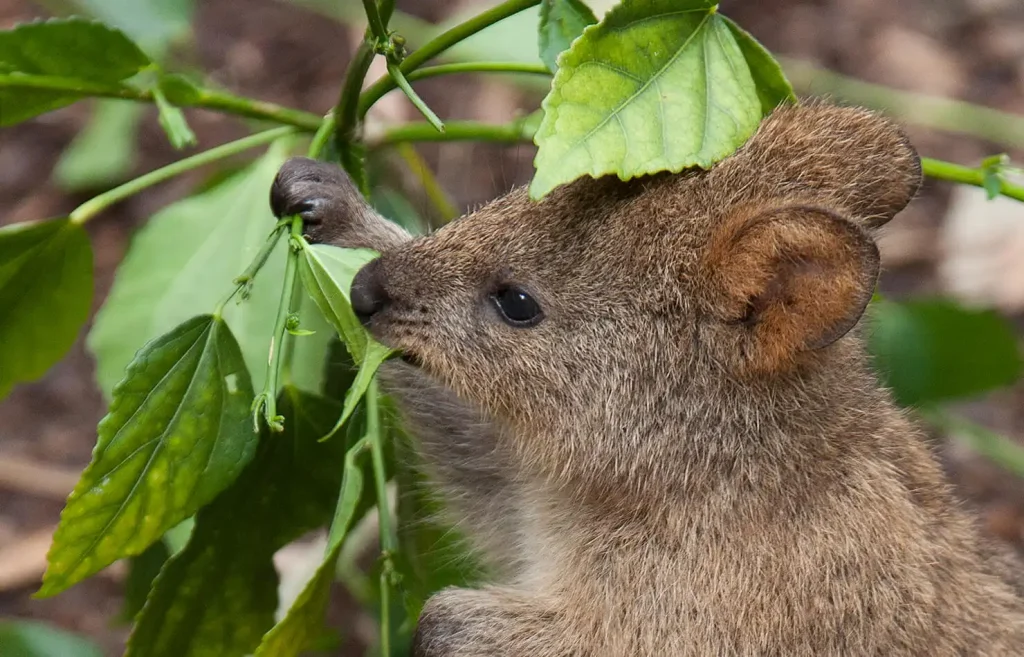
Interestingly, Quokkas have a unique digestive system that allows them to survive with little water. Like cows, they chew cud – this means they regurgitate food to chew it again, helping them extract as many nutrients as possible from their tough, fibrous meals
Life in the Wild
Quokkas are nocturnal animals, meaning they are most active at night. During the day, they hide in dense shrubs and bushes to stay cool and safe from predators. In the wild, their main enemies are dingoes and birds of prey, although introduced species like cats and foxes have caused their populations to decline significantly on the mainland

On Rottnest Island, where there are no predators, Quokkas are more relaxed and will sometimes be seen during the day, particularly around tourists. These animals are also known for their excellent survival skills. Quokkas can go for long periods without food or water if needed, which helps them adapt to the dry Australian climate
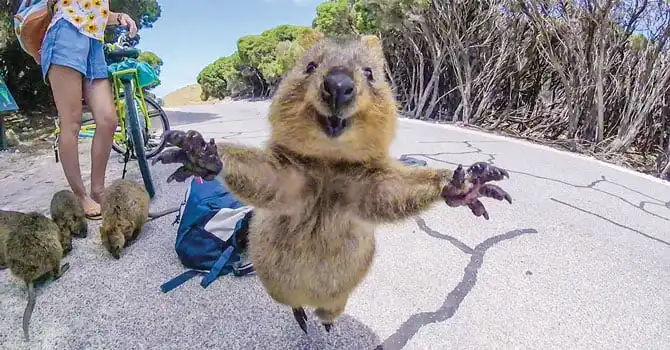
Family Life
Female Quokkas give birth to a single joey about once a year. The joey spends its first six months in its mother’s pouch, similar to other marsupials like kangaroos. If the joey doesn’t survive, the mother’s body can produce another joey from an embryo that was on hold—an ability known as embryonic diapause. This remarkable adaptation ensures that the mother has a backup joey if things go wrong

Males, meanwhile, tend to be more competitive, especially during breeding season. They fight for territory and access to mates, with the dominant male often winning the best spot to rest during the day
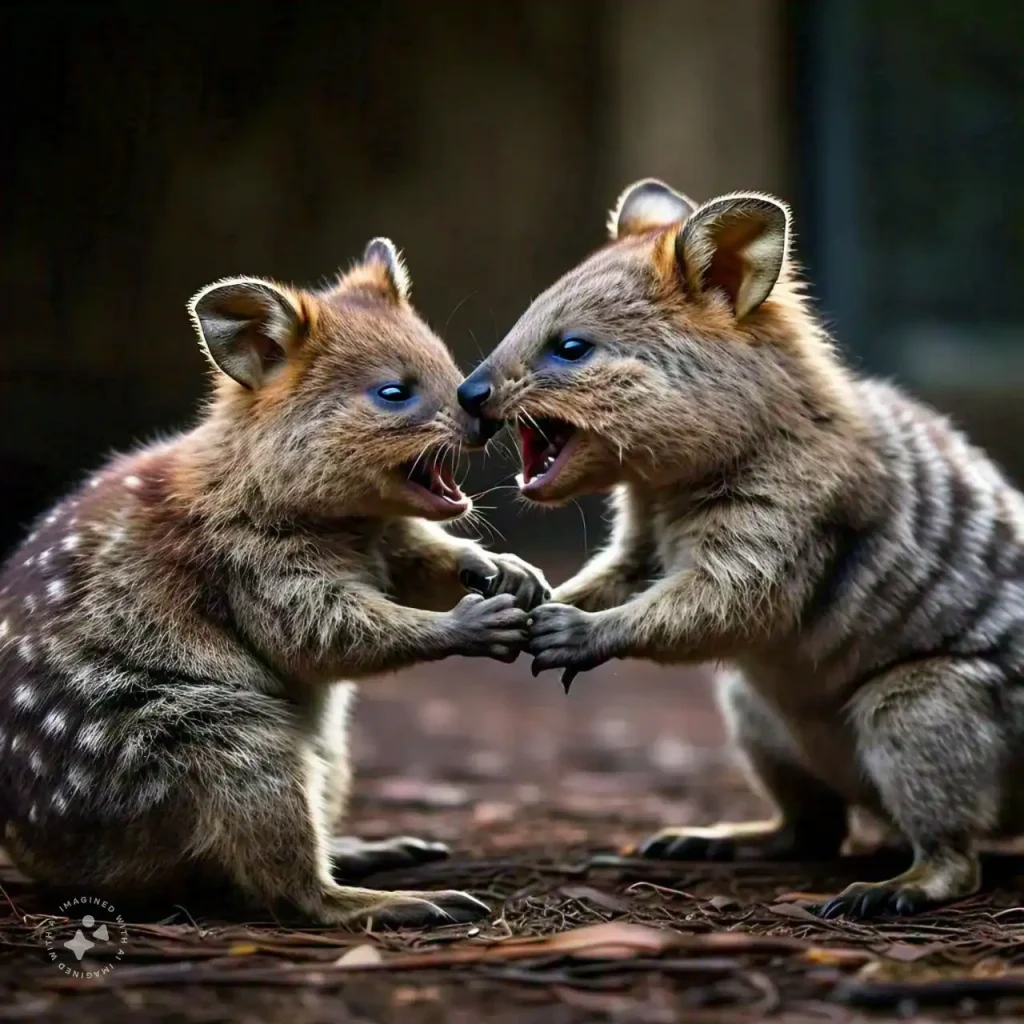
Conservation Status
Unfortunately, Quokka populations have been in decline due to habitat destruction, predation by introduced species, and changes in fire regimes. On the mainland, they are considered vulnerable, but their populations on Rottnest and Bald Island are stable. Conservation efforts are focused on protecting their habitats and keeping these islands predator-free
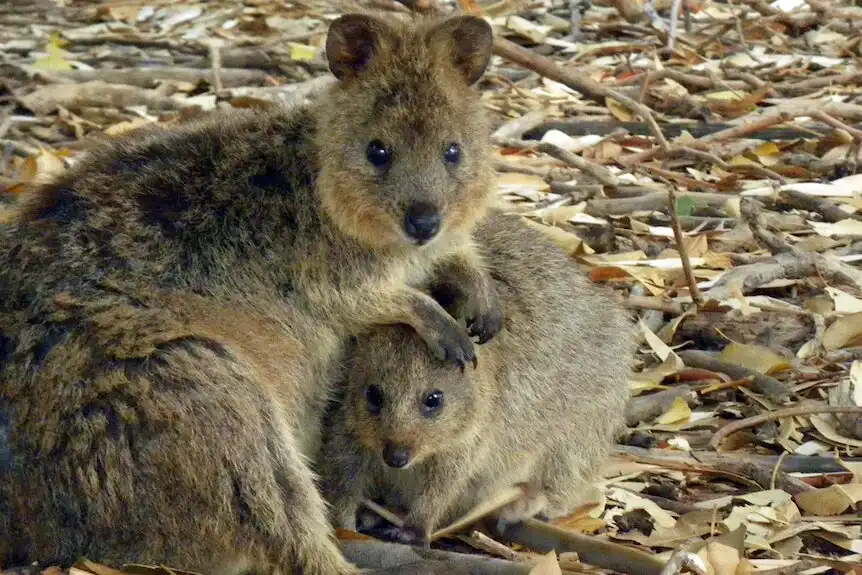
Fun Facts About Quokkas:
- Social creatures: Though mostly solitary, Quokkas can sometimes be found in small groups when foraging for food

- Homebody: They often return to the same resting spot after a night of searching for food

- Tree climbers: These small creatures can even climb small trees and shrubs to reach food
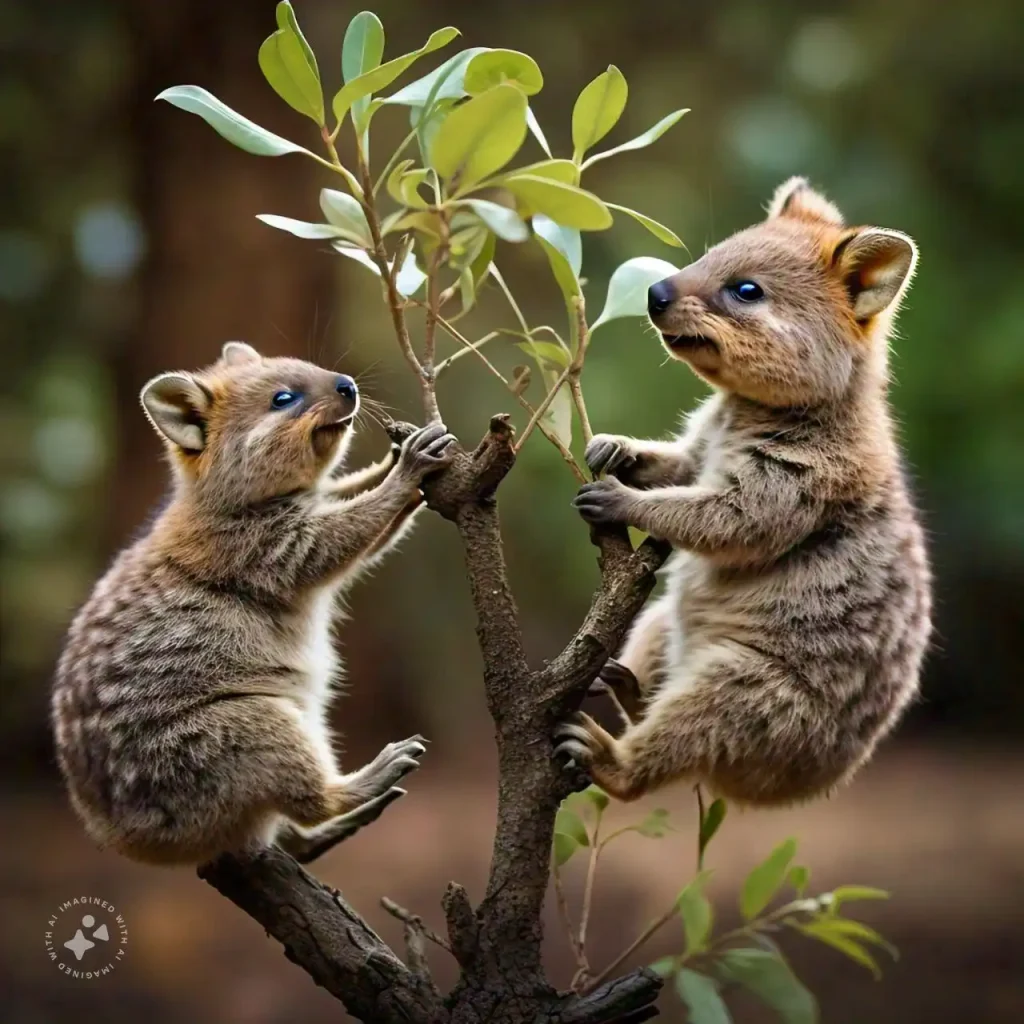
- Tourist magnets: The Quokka’s adorable smile has made them popular among tourists, especially those visiting Rottnest Island
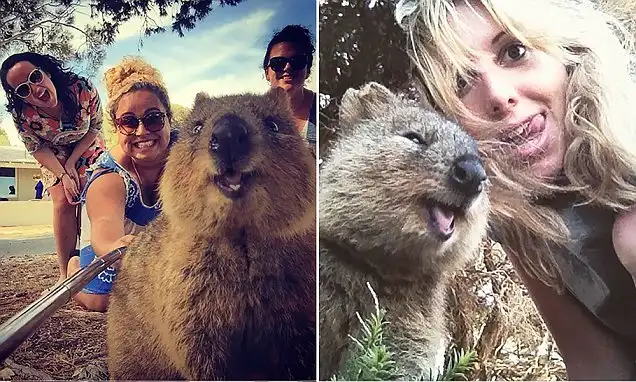
Why Are Quokkas Special?
Quokkas are unique for their ability to adapt to challenging environments, their friendly appearance, and their intriguing family dynamics. While they’ve become famous for their smiles, there’s so much more to these little creatures than their cute faces. By understanding their role in the ecosystem and the challenges they face, we can help ensure that Quokkas remain a symbol of Australia’s diverse wildlife for years to come.
For more interesting articles, please visit www.kidzherald.com





